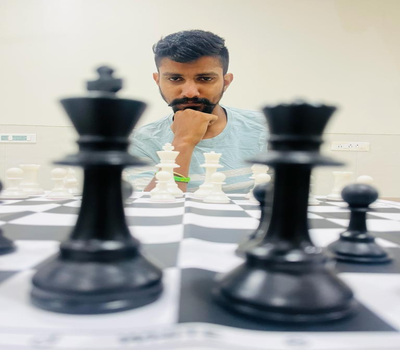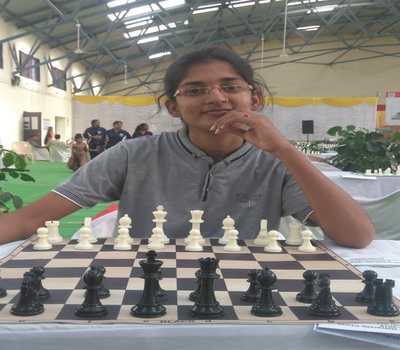Strategic Journey to Become Master
Begin your transformative journey towards chess mastery by enrolling in Talficer Chess Club, the best chess academy in Rajasthan. Embark on a thrilling journey of strategy and skill, where each move shapes your destiny and creates a legacy of triumph on the grand chessboard of champions
Levels
Beginner
A meticulously designed curriculum and expert guidance of a chess coach from the best chess academy in rajasthan. This structured approach ensures a systematic and comprehensive learning of the game, enabling aspiring chess enthusiasts to develop their skills with precision and proficiency.
RegisterIntermediate
Our leading chess academy provides personalized coaching for intermediate players, honing their tactics and strategy skills. Tailored guidance maximizes their strengths, addresses weaknesses, empowering them to reach new heights on the chessboard. Get expert guidance from the best chess academy in rajasthan.
RegisterAdvance
Our advanced course is designed for experienced scholars, providing the tactical skills to excel in high-level tournaments. It covers key aspects such as deep understanding of positions, major openings, and typical middle games, enabling you to navigate any kind of board situation.
RegisterHow We Assist


BENEFITS OF PLAYING CHESS WITH TALFICER CHESS CLUB
Mental Stimulation and Cognitive Development
Strategic Thinking and Planning Skills
Improved Decision-Making Skills
Improved Problem-Solving Abilities
Strengthened Analytical and Logical Thinking
Improved Pattern Recognition Abilities
Enhanced Problem Anticipation and Prevention
Improved Time Management Skills
Increased Self-Confidence and Self-Esteem
Enhanced Critical Thinking Skills
Why Talficer Chess Club
Unleash your chess potential with Talficer Chess Club - where excellence thrives, champions are born, and success is inevitable.
Trained Students
Class Conducted
Years of Experience
Student Awards
Learn From The Best Trainer
Vishvanath Purohit, a chess trainer extraordinaire, possesses an unmatched mastery of the game. With his brilliant coaching, unwavering passion, and exceptional guidance, he transforms aspiring players into formidable chess champions.
8+ Year Experience
Trained 3000+ Students
Founder, Coach at TALFICER CHESS CLUB
FIDE Rating : 1409


Achievements of Students

Sachin Parmar
- 7th Jaipuria National fest — GOLD
- Stani memorial chess tournament 2018 — SILVER
- Intercollegiate chess tournament 2019 — GOLD
- Reprensented Rajasthan university in west-zone intercollegiate tournament Jaipur 2019

Varnit Dixit
- Varnit dixit won Jaipur district U-11 open chess championship 2022
- Stood 5th U-11 state chess championship 2022, udaipur.
- Stood 4th in U-13 district chess championship, jaipur

Manas Dhabhai
- Rajasthan Intercollegiate 2021- Bronze
- Ninth national sports meet 2022-gold
- Apex University championship 2022-gold
- JECRC SPHOORTIE championship 2022- gold
- Rajasthan collegiate 2022 – silver

Shreshthi Bhandhari
- Scored 5/6 points in west zone of CBSE interschool sports and games competition and supported team to secured 2nd place in 2019-20 Surat, Gujrat.
- Represented Rajasthan in Nationals of CBSE interschool sports and games competition in 2019-20 Delhi
- Stood 4th in U-13 district chess championship, jaipur












